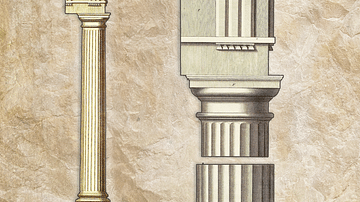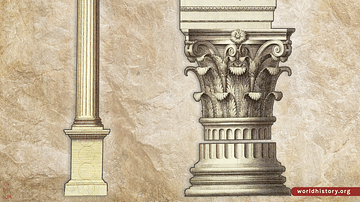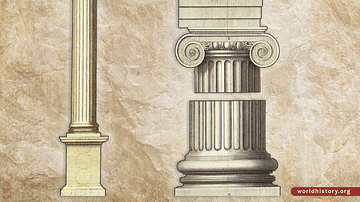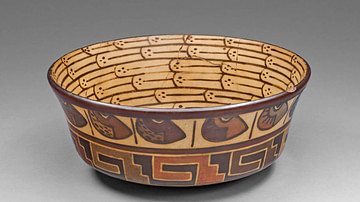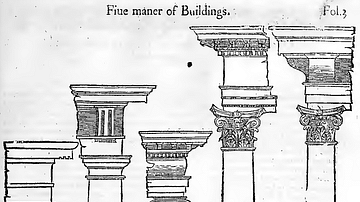Illustration
The Classical Orders of Architecture, rooted in ancient Greece and further developed by the Romans, are essential design principles shaping classical and neoclassical buildings. These orders - Doric, Ionic, and Corinthian - have their roots in ancient Greek architecture, while the Romans introduced Tuscan and Composite which share common elements but exhibit distinct new characteristics. Doric emphasizes simplicity, Ionic introduces slender and graceful sophistication, Corinthian showcases ornate grandeur, Tuscan exhibits refined simplicity, and Composite blends Ionic and Corinthian elements. Widely adopted during the Renaissance and Neoclassical periods, these orders remain influential, emphasizing proportion, balance, and aesthetic harmony in architectural design.
About the Author
Cite This Work
APA Style
Netchev, S. (2012, October 27). Architectural Column Orders. World History Encyclopedia. Retrieved from https://www.worldhistory.org/image/948/architectural-column-orders/
Chicago Style
Netchev, Simeon. "Architectural Column Orders." World History Encyclopedia. Last modified October 27, 2012. https://www.worldhistory.org/image/948/architectural-column-orders/.
MLA Style
Netchev, Simeon. "Architectural Column Orders." World History Encyclopedia. World History Encyclopedia, 27 Oct 2012. Web. 13 Apr 2025.



